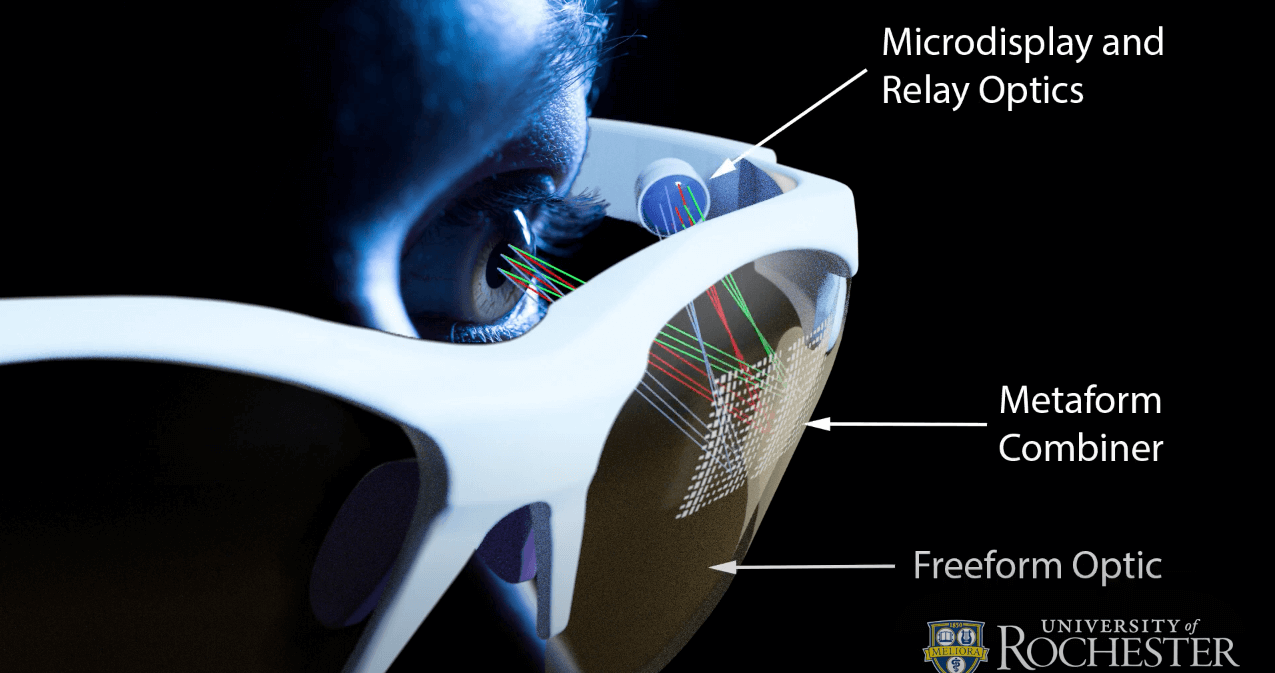Insights From The Blog
Metaform Optics: The Future of Making AR/VR Glasses
According to an influential market research company, the global market for AR and VR glasses stood at a massive $8.31 billion in 2019, and is expected to reach a staggering $33.16 billion by 2027, with step increases in future years. Whether you’re a user or not, XR technology is going to have a huge – and ever-extending – impact on how we live.
AR/VR smart glass systems have the potential to not only enhance but, in some instances, to even replace existing technology solutions within many business situations. But further than this, they make many parts of our working lives easier as well as changing the structure of the work environment. Companies implementing XR solutions and wearable electronics are demonstrating increases in workplace efficiency, productivity, and compliance, which is expected to be lucrative when technology of this nature continues to mature.
XR technology has now reached a point where computing power and graphics are exceptional, and we are starting to see the real benefits of virtual worlds and elements in our lives, but if there is any criticism of the current systems, it is that the optics aren’t quite up to scratch. There is little point in having excellent computer graphics delivery if the actual viewing port makes it all a bit fuzzy. There is also criticism of the aesthetics of some headsets – AR and MR units in particular – and the rather unnatural look to them. Just look at something like the Magic Leap and try not to think of spiders. The optics in headsets definitely need a bit of TLC, and luckily, new technology may be just about to do that.
With current designs, XR devices suffer from a mix of vergence-accommodation conflict (VAC) and focal rivalry, and anyone who has worn an AR/VR headset for any length of time will recognise these as eye fatigue. They manifest as an inability to read text up close, and the struggle to complete precision tasks because virtual content is not well integrated with the real world in AR systems. System analysts estimate that 95% of current enterprise AR applications would see an immediate benefit if these issues were sorted out.
VAC is a real issue for ‘non-world’ viewing devices like XR equipment. In the real world, as something approaches, our eyes naturally turn slightly inward to triangulate with it. The fixed focal distance that is set on XR headsets doesn’t allow this and as something virtually approaches us, our eyes are simply not fooled and we get eye strain. This hasn’t been very easy to fix so far, but now, luckily, a group of researchers at the University of Rochester have developed a new system that might just help with this, and make AR headsets in particular much more like simple goggles rather than hefty headsets that they currently are.

Now the team at Rochester have developed a system of imprinting freeform optics with a nanophotonic optical element called a “metasurface”. A metasurface is akin to a veritable forest of tiny, silver, nanoscale structures on a thin metallic film that follows the freeform shape of the optics, and thereby making a new optical component that the researchers refer to as a metaform. This metaform is able to defy the conventional laws of light reflection, and gather the visible light rays entering an AR/VR eyepiece from all directions, focusing them directly into the human eye. While this kind of innovation can be used on any kind of optics, it has huge ramifications for devices like XR equipment screens and optics and could be a major means of correcting the issues that many people experience with the ‘flat’ optics.
The integration of freeform optics and metasurfaces has now been proven, but the next big challenge comes with reliably manufacturing them and introducing them into current designs, but this is an engineering problem, and with such a huge market potentially available, money and resources will be applied to the problem.
If the work that the team does comes to fruition, then eye strain and hazy focus are going to be a thing of the past, and we can really start to enjoy the view.